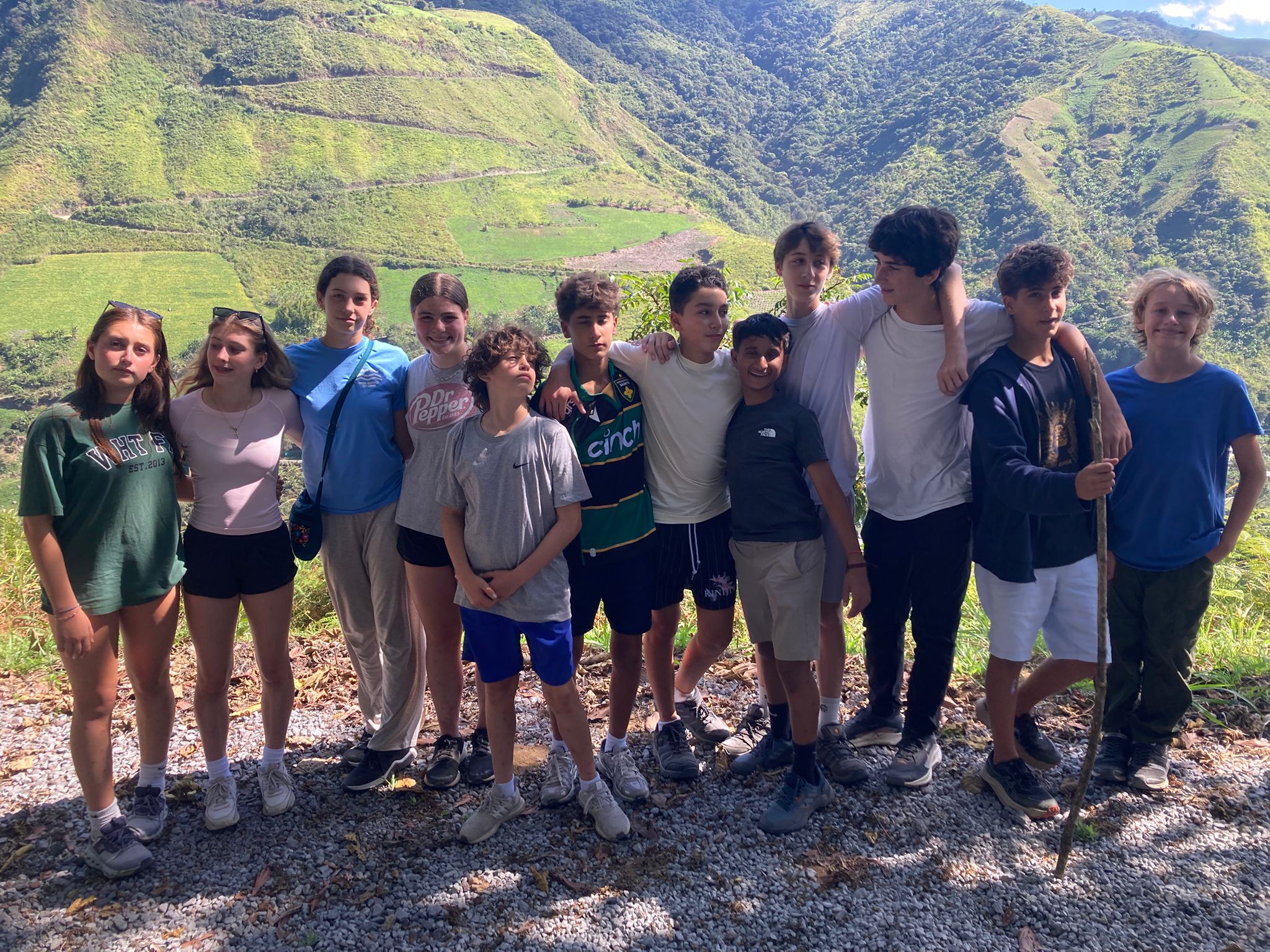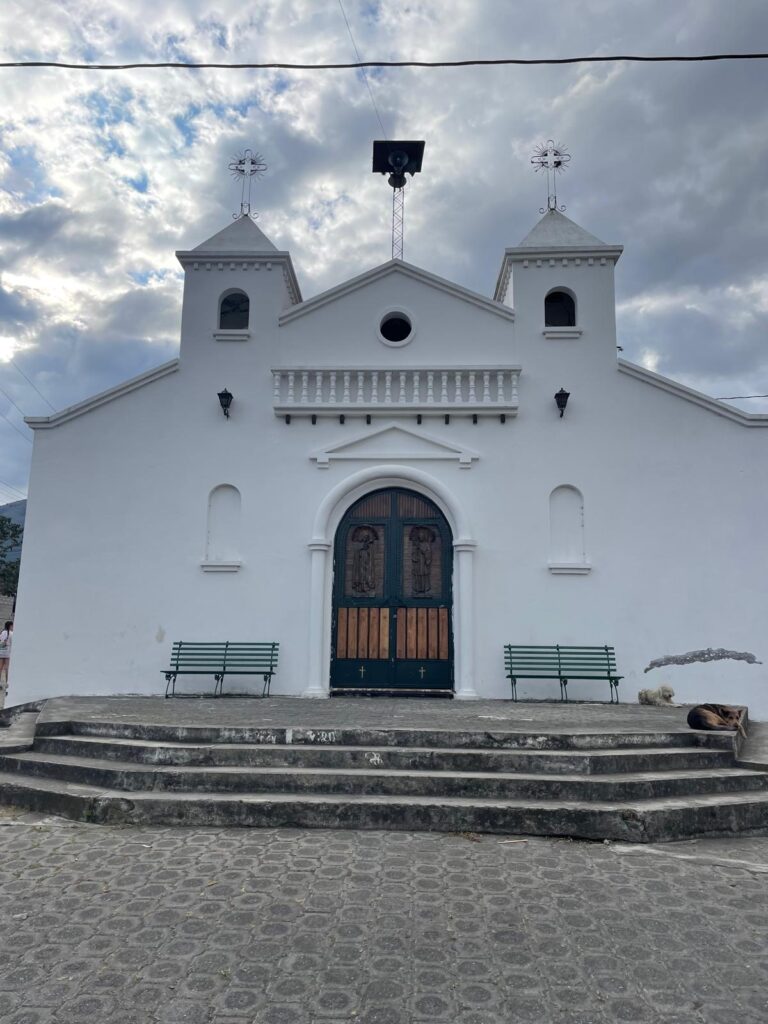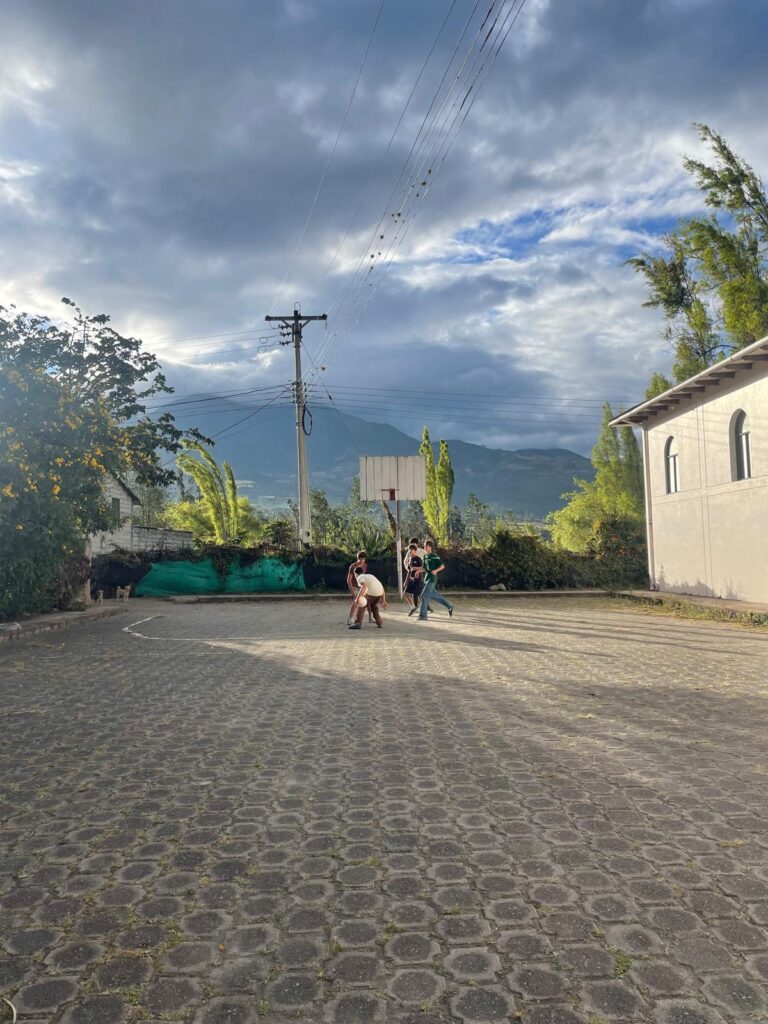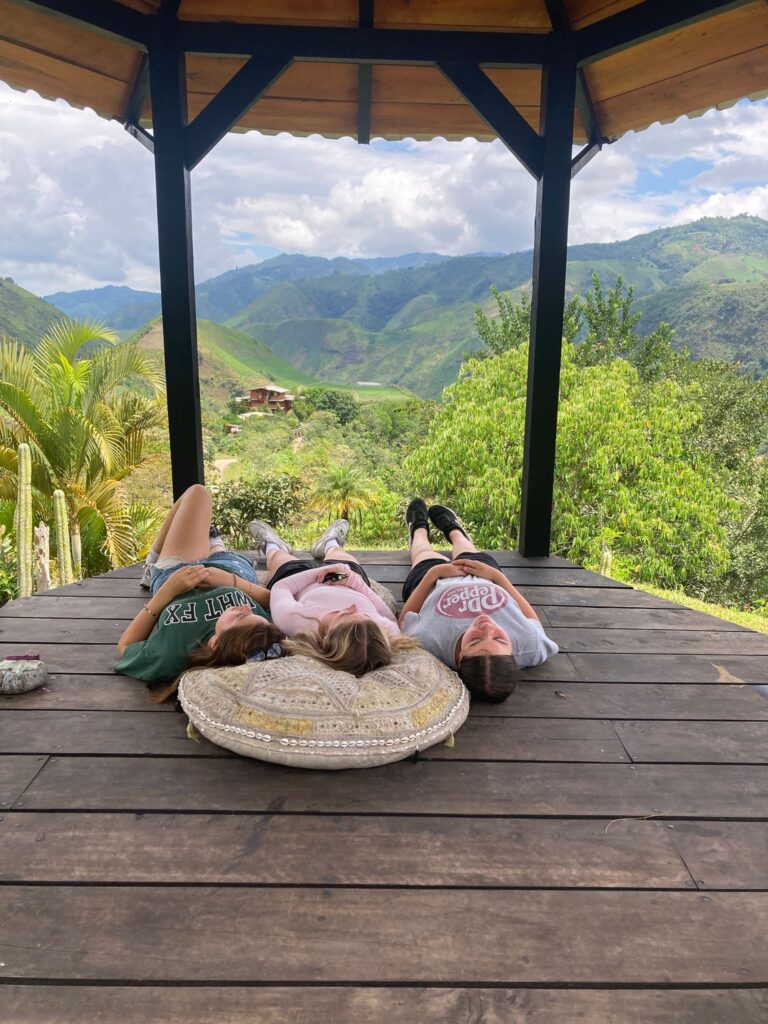Read Putney student Eva’s research into the rich history of Turuco, Ecuador for her independent project on our Middle School Service Ecuador & the Galápagos program.
Turuco, Ecuador may be a small place, but it has a big story. From its early roots to the traditions still alive today, its history reflects just how much this community has been through and how it has stayed strong over time. Luis Alberto Anrango Bonilla was born in Turuco in 1947. He grew up in Turuco and lived in Quito for a time, but he eventually decided to make his hometown his current residence. I (Eva) interviewed Luis to gain some information about the history of Turuco for a personal project for my Putney Student Travel program.

I learned that there are 2 parts of the word “Turuco,” “tur” means wetland and “uco” means humid corner. La Capilla de Turuco—The Church of Turuco (Catholic), was built by previous generations and was created around 1825 by Pedro de la Cruz and others. Because de la Cruz didn’t have any money to build the church, they collected donations with the help of the image of Saint Rosario. Slowly through donations, they were able to collect enough money to buy cement and wood to build the church. It was one of the first churches for the Cotacachi people, therefore they often host important cultural events at the church. Sometimes the senior members of the church host ceremonies of mass. In the plaza, they have dancing groups that host abagos. Abagos are a dance that includes rhythmic and grounded movements that require the effort of the entire body. In 1872, an earthquake made the tower of the church fall. The following generations collected more donations to rebuild the church to what can be seen today. On May 12th, 1938, the community of Turuco was legally recognized as a formal community by the national government. Every May, the community celebrates the day they finished building the church and became recognized. The church is judicially called “Eloy Alfaro.”

Before the Spanish colonized the areas, an indigenous tribe known as the Caras lived on the land. Many places around Turuco are named after the Caras language. Some examples of the Caras language include: Aponi – sun, Chiga – water, Tse – person. After came the Incas, who conquered and colonized the Caras. Because the tribe was colonized by the Incas, they learned the Quechua language. Currently, the Turuco community is small, and there have never been more than 300 people living in the Turuco community. However, they live autonomously with the recognition of the national assembly with access to services like: drinkable water, electricity, septic system, sport fields, paved streets and telephones.

Some of the communities surrounding Turuco include: Otavalo, Cotacachi, and Ibarra. Today the community belongs to a wider association of nearby regional organizations such as Cotacachi and Quichua. Bonilla shared that a notable person from Turuco was Jose Eloy Alfaro-Delgado, who was born in Turuco in 1842 and was president of Ecuador. He greatly supported building of the church, rights for indigenous people to go to school, and rights for women’s education. He was president of Ecuador from 1906 to 1911.

I really enjoyed learning so much about Turuco and all of its history. They have such an amazing past!
– Eva
To learn more about our Middle School Service Ecuador & the Galápagos program, click here!





